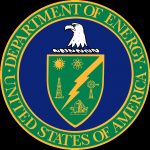From Ames Laboratory, Aug. 26, 2020: Ames Laboratory is a key partner in the Superconducting Quantum Materials and Systems Center, led by Fermilab and part of the DOE Quantum Science Initiative announced by the White House. Fermilab has been awarded $115 million over five years for a National Quantum Information Science Research Center to build a revolutionary quantum computer prototype.
quantum science
From Nextgov, Aug. 26, 2020: Department of Energy Undersecretary Paul Dabbar discusses how, through quantum computers, humanity will tackle some of the world’s greatest challenges. DOE has established five new quantum information science centers at its national labs with funding of over $965 million, including $625 million in authorized funding from the DOE over five years, and over $340 million from the center participants.
From La Repubblica, Aug. 27, 2020: Le chiamano scienze dure: matematica, fisica, ingegneria. E serve un impegno enorme, per arrivare ai vertici. Anna Grassellino da Marsala, classe 1981, ne è un esempio. Il suo campo è la superconduttività a radiofrequenza. Il Department of Energy americano le ha appena messo in mano 115 milioni di dollari per realizzare il nuovo centro di calcolo quantistico che si chiama Superconducting Quantum Materials and Systems Center, Sqms per dirlo in modo semplice.
From Illinois Institute of Technology, Aug. 26, 2020: Illinois Institute of Technology has been named a partner with Fermilab’s Superconducting Quantum Materials and Systems Center, which has a goal of building and operating a new quantum computer that could be millions of times more powerful than modern supercomputers.
From the Department of Energy, Aug. 28, 2020: The White House Office of Science and Technology Policy, and the U.S. Department of Energy announced the members of the National Quantum Initiative Advisory Committee, which will counsel the Administration on ways to ensure continued American leadership in quantum information science. Fermilab Deputy Director Joe Lykken is one of the members.
From Northwestern University, Aug. 26, 2020: Fermilab has been selected to lead one of five national centers to bring about transformational advances in quantum information science as a part of the U.S. National Quantum Initiative. Northwestern University is a major partner in the new center. The materials science and physics faculty, combined with the University’s cryogenic and materials characterization facilities, will play a central role in research to improve the performance of superconducting qubits and microwave cavities for quantum computing and sensing applications.
From The Wall Street Journal, Aug. 26, 2020: The White House announced that federal agencies and their private sector partners are committing more than $1 billion over the next five years to establish 12 new research institutes focused on artificial intelligence and quantum information sciences. The Energy Department will supervise and invest $625 million in the five centers focused on quantum information sciences, including one led by Fermilab.
From Oak Ridge National Laboratory, Aug. 26, 2020: The Department of Energy has selected Oak Ridge National Laboratory to lead a collaboration charged with developing quantum technologies that will usher in a new era of innovation. The Quantum Science Center, led by Oak Ridge, will receive $115 million over five years to realize the potential of topological quantum materials for manipulating, transferring and storing quantum information. Fermilab is a partner organization in the Quantum Science Center.
From University of Chicago, Aug. 26, 2020: The Department of Energy is establishing five new National Quantum Information Science Research Centers, including a center led by Argonne and a center led by Fermilab, which are each projected to receive $115 million in funding over the next five years. The Fermilab-led center, called the Superconducting Quantum Materials and Systems Center, aims to build and deploy a beyond-state-of-the-art quantum computer based on superconducting technologies. The center also will develop new quantum sensors, which could lead to the discovery of the nature of dark matter and other elusive subatomic particles.
Funding will go towards NSF-led AI Research Institutes and DOE QIS Research Centers over five years, establishing 12 multidisciplinary and multi-institutional national hubs for research and workforce development in these critical emerging technologies. Together, the institutes will spur cutting-edge innovation, support regional economic growth and advance American leadership in these critical industries of the future.

